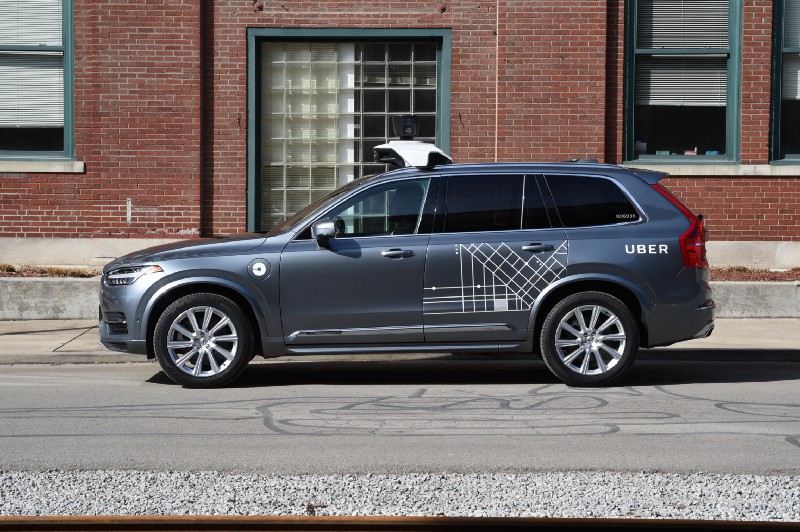Uber robotic vehicles return to the roads, but people will drive them

On Habré it was already told about the accident of the car with autonomous control of Uber, during which a man died. There were two participants in the accident, to be exact - three: a romo mobile, its operator, who at that moment was watching the show “The Voice” and the victim, a cyclist in dark clothes, crossing the road in the wrong place. The software of the machine was determined by an obstacle, but did not stop, because the computer itself did not establish the nature of the object itself, which is ahead of the course. Well, the "security operator", watching the show on the smartphone screen, could not help at all for obvious reasons.
After the incident, not only Uber engineers, but also law enforcement officers, who needed to identify the perpetrator, began to study the features of the work of the robots. The investigation is still underway and there is no final conclusion. However, computer-controlled cars again entered the roads of Pittsburgh in order to test their own capabilities. True, they are now completely under the control of man.
Uber itself decided to use this method of return - no one forced it. At least, the representatives of Uber say this in this way. They decided not to give up RoboMobiles - after all, this is indeed a very promising technology (and the project itself cost billions of US dollars). But until everything is settled, and the security of the computer system is not proven, people will manage the control of the Uber robotaxy.
New specialists will not watch any shows - firstly, they simply cannot do it while driving, and secondly, they are strictly forbidden to be distracted. Security operators went through a multi-week intensive training, as a result of which they became a traffic safety pro, and applied to rob-mobiles.
Moreover, the car is now not one person, but just two - the second will be engaged in fixing various incidents on the road so that in the future the problem can be corrected.
Observation will now be not only for the road, but also for the operators themselves - so that all parties to the project, including regulators, can be confident that the operators are engaged in performing their direct duties, and not third-party things. If necessary, they can contact the help center - this is already if the situation is very complicated.
Another improvement concerned the obstacle avoidance system. It works both in automatic mode and at the time when a person drives a car. The system "gives the brakes" in some situations, including changing the characteristics of traffic on the road. If the cyclist in dark clothes and at night will walk again on the road, the car can already react. As it turned out, in some robotic mobiles, the systems were sometimes simply turned off, hoping that the person in the cabin would be able to react to the problem in time and stop the car before the accident.
Uber has modified the route navigation interface, which is demonstrated on the embedded control system. Modifications were made after the accident, taking into account all the problems and shortcomings.
In the next few months, the vehicles of the company will again be allowed to operate in a fully automatic mode - but only after Uber and the regulators can verify the safety of movement of this type of vehicles on the road. Now experts are testing various models of difficult situations on public roads in order to find a solution to the problem.
Another nuance is that the company has developed high-quality maps for their robots. Thanks to these cards, cars will be able to move along the roads without any problems - in any case, their developers are sure of this.
Anyway, not only representatives of Uber are confident that automation is the future. The same Ilon Musk believes that ro-mobiles help to drastically reduce the level of accidents - by 50% or more. So the work on the development of this sphere will be continued. But the repeated release of Uber's ro-mobiles with the form in which it was earlier, will probably not happen too soon.
